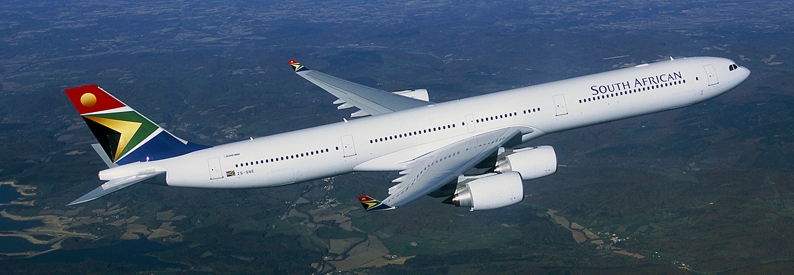South African Airways needs new long-haul fleet – CEO

South African Airways (SA, Johannesburg O.R. Tambo) will need to operate a more modern wide-body fleet on intercontinental routes and engage in more cooperative partnerships with other airlines once it returns to the international market after the COVID-19 crisis, says acting chief executive officer, Thomas Kgokolo.
Speaking during an online webinar hosted by Business Day “Dialogues”, he said SAA eventually intends to return to routes that were previously revenue-generating, such as to the UK, Germany, the USA, and Brazil. However, referring to the fuel-inefficiency of the airline’s remaining two own 18-year-old A340-600s, he said: “We must ensure that we get the right fleet to do those trips, to minimise our costs, and be able to compete. One of the strategies is to be much more collaborative in the way we do business. Where we can do partnerships with other airlines, such as Emirates and Qatar Airways, we will do so, but our focus right now will be on stimulating the regional market and making sure that the region is interconnected.”
SAA is scheduled to restart domestic and regional flights on September 23 after emerging from 19 months in bankruptcy protection. It will operate only one domestic route between Johannesburg O.R. Tambo and Cape Town, and five regional routes including Accra (Ghana), Kinshasa N’Djili (DRC), Harare Int’l (Zimbabwe), Lusaka (Zambia), and Maputo (Mozambique). Domestically, based on ticket sales, it was expecting 75% load factors, Kgokolo said. He was concerned about low travel demand on regional routes impacted by the pandemic but believed there was potential for route growth between Lagos and Johannesburg due to higher demand and fewer competitors.
For its initial restart, SAA will use three 17-year-old A319-100s leased from Castlelake and one four-year-old A330-300 leased from Aero Capital Solutions, all of which were stored at Johannesburg O.R. Tambo during the airline’s business rescue process, as well as two seven-year-old A320-200s leased from Goshawk, which recently returned to Johannesburg from maintenance storage in Abu Dhabi Int’l.
Its A340-600s remain in storage at Johannesburg. Four A350-900s previously operated on long-haul routes have been returned to their owners or lessors, of which two have gone back to Avolon and are currently stored at Teruel, and two to Air Mauritius of which one is active and the other is stored at Mauritius, ch-aviation fleets advanced data reveals.
Despite having emerged solvent from administration following a ZAR10.5 billion rand (USD720 million) state bailout, a lot was still to be done to address legacy issues and to dissuade public scepticism in the market, Kgokolo said.
“The biggest lesson learned through the business rescue process is the need to manage costs effectively and how much brand damage was done to SAA through the business rescue process,” he said.
As part of the restructuring of SAA, the government has agreed to sell 49% to a new strategic equity partner, the Takatso Consortium, comprising asset fund manager Harith General Partners and ACMI-specialist Global Aviation Operations. The investors are to provide ZAR3 billion (USD205 million) in bridging finance for SAA in the next three years, while the state aid will go towards covering the carrier’s historical debts.
Kgokolo confirmed that both parties had concluded their due diligence procedures and were now negotiating a share purchase agreement but added that the process was likely to be lengthy as it would still have to get the green light from the country’s competition authority. “Generally a deal like this will still be subject to the Competition Commission and those processes can be complex and take time,” he said.
